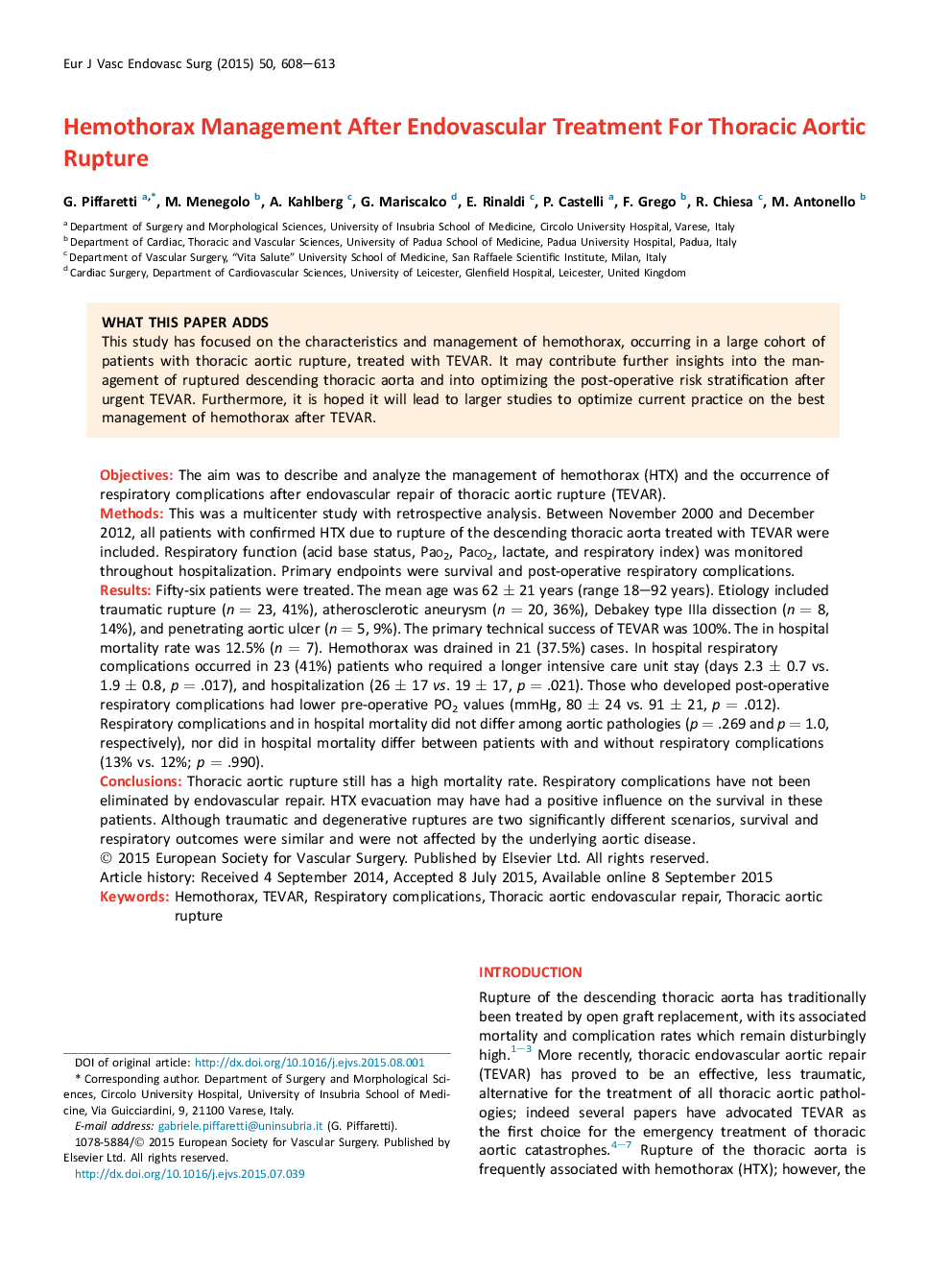| کد مقاله | کد نشریه | سال انتشار | مقاله انگلیسی | نسخه تمام متن |
|---|---|---|---|---|
| 2911792 | 1575436 | 2015 | 6 صفحه PDF | دانلود رایگان |
ObjectivesThe aim was to describe and analyze the management of hemothorax (HTX) and the occurrence of respiratory complications after endovascular repair of thoracic aortic rupture (TEVAR).MethodsThis was a multicenter study with retrospective analysis. Between November 2000 and December 2012, all patients with confirmed HTX due to rupture of the descending thoracic aorta treated with TEVAR were included. Respiratory function (acid base status, Pao2, Paco2, lactate, and respiratory index) was monitored throughout hospitalization. Primary endpoints were survival and post-operative respiratory complications.ResultsFifty-six patients were treated. The mean age was 62 ± 21 years (range 18–92 years). Etiology included traumatic rupture (n = 23, 41%), atherosclerotic aneurysm (n = 20, 36%), Debakey type IIIa dissection (n = 8, 14%), and penetrating aortic ulcer (n = 5, 9%). The primary technical success of TEVAR was 100%. The in hospital mortality rate was 12.5% (n = 7). Hemothorax was drained in 21 (37.5%) cases. In hospital respiratory complications occurred in 23 (41%) patients who required a longer intensive care unit stay (days 2.3 ± 0.7 vs. 1.9 ± 0.8, p = .017), and hospitalization (26 ± 17 vs. 19 ± 17, p = .021). Those who developed post-operative respiratory complications had lower pre-operative PO2 values (mmHg, 80 ± 24 vs. 91 ± 21, p = .012). Respiratory complications and in hospital mortality did not differ among aortic pathologies (p = .269 and p = 1.0, respectively), nor did in hospital mortality differ between patients with and without respiratory complications (13% vs. 12%; p = .990).ConclusionsThoracic aortic rupture still has a high mortality rate. Respiratory complications have not been eliminated by endovascular repair. HTX evacuation may have had a positive influence on the survival in these patients. Although traumatic and degenerative ruptures are two significantly different scenarios, survival and respiratory outcomes were similar and were not affected by the underlying aortic disease.
Journal: European Journal of Vascular and Endovascular Surgery - Volume 50, Issue 5, November 2015, Pages 608–613
